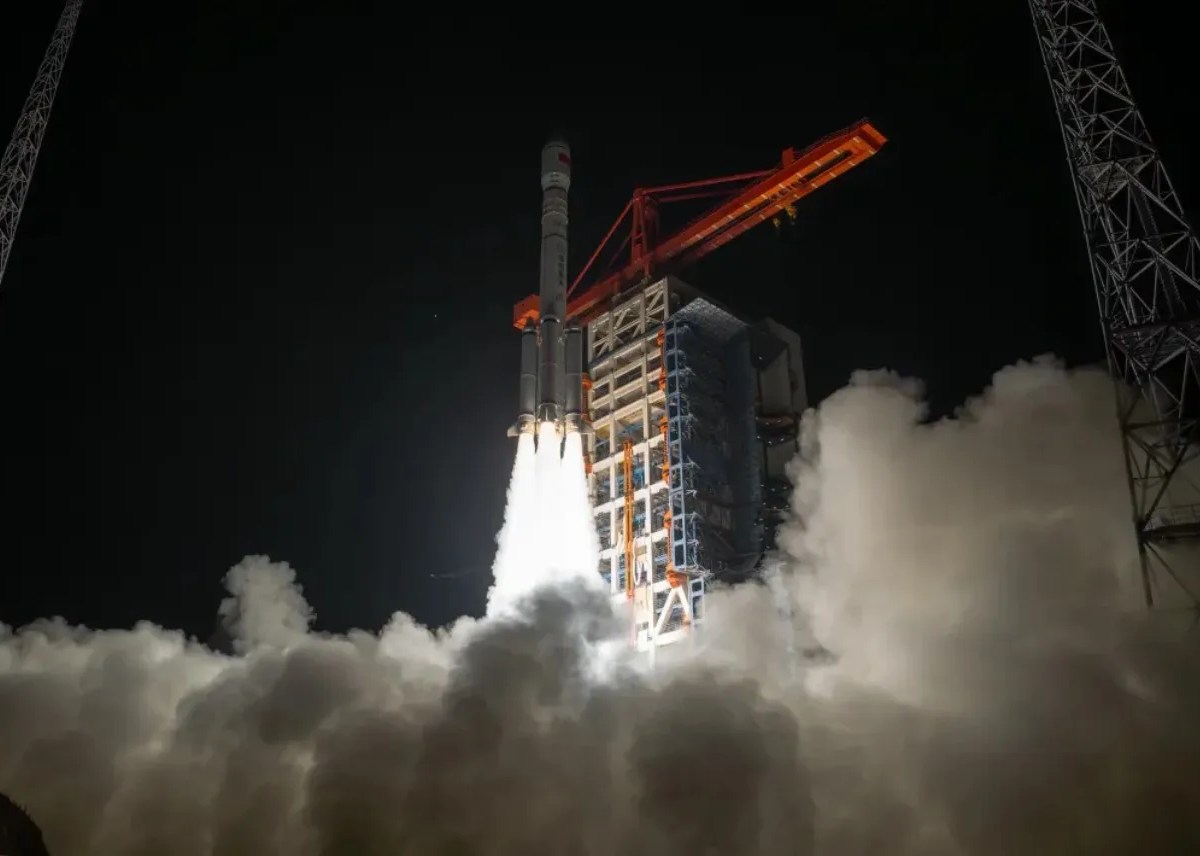MILAN — China successfully launched the second group of 18 satellites for the planned 14,000-satellite Thousand Sails megaconstellation Tuesday.
A Long March 6A rocket lifted off from Taiyuan Satellite Launch Center, north China, at 7:06 a.m. Eastern (1106 UTC) Oct. 15. The China Aerospace Science and Technology Corporation (CASC) announced launch success over two hours after liftoff.
The Long March 6A upper stage deployed the flat panel Qianfan (or “Thousand Sails”) Polar Orbit-02 group of 18 satellites into polar orbit for Shanghai Spacecom Satellite Technology (SSST). The project is sometimes referred to as G60 Starlink.
The mission will be followed closely for a number of reasons. The Long March 6A, developed by the state-owned Shanghai Academy of Spaceflight Technology (SAST), has, despite successful launchers, suffered issues with its upper stage fragmenting. Its last launch—which carried the first 18 Qianfan satellites—broke up into a cloud suspected to number more than 700 pieces of orbital debris. SAST has so far not responded to requests for comment.
Furthermore, there are concerns over the apparent brightness of the Qianfan satellites and their potential impact on astronomy.
SSST plans for the constellation’s first stage to consist of 1,296 satellites. 648 of these are to be launched by the end of 2025 to provide regional network coverage. The completed network will consist of more than 14,000 low Earth orbit broadband multimedia satellites.
The project requires a surge in launch rate. Chinese commercial launch companies are developing a range of reusable rockets with the aim of securing contracts from this and other Chinese constellation projects.
There is also work to expand China’s spaceports to support these new launchers, and allow the country’s launch rate to continue to grow.
SSST itself has strong financial backing. In February it raised $943 million for the constellation’s development and construction. Established in Shanghai’s Songjiang District in 2021, SSST’s project is also supported by the municipal government. Shanghai has developed its own commercial space action plan, of which Thousand Sails is just one aspect.
The Long March 6A rocket used for Tuesday’s launch combines liquid propellant core stages with solid rocket boosters. The launcher can carry 4,500 kg to a 700-km sun-synchronous orbit.
The mission was China’s 48th orbital launch of the year, following the Oct. 10 launch of a third high orbit internet satellite. China’s main space contractor CASC, to which SAST belongs, had stated the country was aiming for around 100 launches across 2024. This number included Long March and commercial rocket launch plans. China’s national record for launch attempts in a calendar year is 67, set in 2023.



